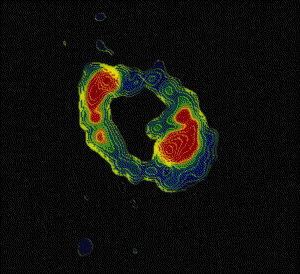Post
Here and There
14 December 2012
When Isaac Newton proposed his universal law of gravity he was actually making a rather bold claim, specifically that the distant stars and planets are governed by the same physical laws that govern the Earth. This was a radical split from the traditional Aristotelian view that the heavens were fundamentally different from terrestrial physics.
Newton’s law of gravity was the first step toward the broader idea of universality, the idea that the laws of physics (whatever they may be) are valid throughout the universe. It is a necessary foundation of astrophysics, because it allows us to compare phenomena we observe in distant space with experiments we do in the lab. Of course that raises the question of how we could possibly know this. What if physics depended on where and when you are? What if it changes gradually, so that our galaxy follows basically the same physics, but a galaxy billions of light years away follows a different set of rules?
 MERLIN
MERLINOne of the ways you can test this assumption is by looking at what are known as dimensionless constants. These are constants determined by combining certain physical values so that the units cancel out. For example, the ratio of the electron mass to the proton mass or the fine structure constant for electromagnetism. By measuring different physical quantities we can determine the value of these constants in the lab. We can also make observations of distant objects to determine the constants. If the laws of physics are the same everywhere, then these constants can’t change and our two determinations should give the same result.
Recently astronomers observed how methanol absorbed light in the distant galaxy PKS 1830-211, pictured below. From that determined the ratio of electron to proton mass. They found it agreed with the lab result to within one part in ten million. The light they observed left PKS 1830-211 seven billion years ago, so this shows that the laws of physics seven billion years away and seven billion years in the past were the same as they are today.
It seems that science is valid everywhere, which is pretty awesome when you think about it.